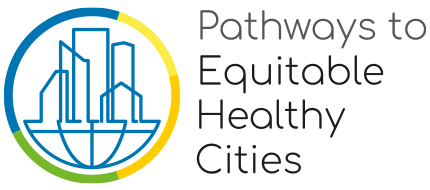Road pricing is increasingly being considered by cities as a strategy to manage congestion, meet climate targets, and support transport infrastructure. A handful of cities including Singapore, London, Stockholm, and Milan have already implemented large-scale road pricing systems. Most of these systems are implemented as cordon-based systems, where drivers have to pay to enter a cordoned area – usually located around the downtown core.
While health is not usually a stated goal of road pricing policies, existing evidence has found these policies can have positive effects for health by reducing road traffic collisions and air pollution. However, less is known about how these effects are distributed across populations and geographic regions.
In my recent paper, my colleagues and I reviewed the literature to explore what is known about the effects of large-scale road pricing policies on transportation and health equity. The goal was to understand how the transportation and health-related benefits and burdens of road pricing policies are distributed across the population, including by income, age, gender, and geographic region.
Our scoping review turned up 15 studies that evaluated the road pricing policies in Singapore, London, Stockholm, Milan, and Gothenburg. The findings suggest that the existing pricing systems have mostly net positive effects related to a reduction in car trips, air pollution, asthma attacks, road traffic collisions, and increases in life expectancy.
Despite these positive net effects, there is some degree of inequity in the distribution of impacts, for example:
- Income: People with lower incomes were more likely to change their transportation patterns in response to road pricing, and to report difficulty affording the charge.
- Gender: Women were more likely to indicate difficulty affording the charge. Further, amongst people who switched to public transit after the system was implemented, travel times increased more for women than men.
- Age: Relative to other age groups, people aged 35-55 benefited most in terms of travel time savings and accessibility. In terms of social interactions, people aged 25-34 found it more difficult to visit with family and friends.
- Geographic region: People living inside the cordon indicated better access to shops and services compared to those living outside. Additionally, greater decreases in air pollution and traffic collisions were reported for the area inside the cordon compared to the area outside.
Ultimately, the impacts of road pricing are also a function of where the revenues of the road pricing system are invested. Our review highlighted areas for investment that may be important to mitigate impacts for certain groups. For example, to reduce the cost burden, subsidies may be considered for lower income populations, especially those with limited public transit access.
The Health in All Policies framework developed by the World Health Organization calls on all sectors and levels of government to systematically take into account the health implications of public policies. Road pricing is a policy that has potential for positive health effects, but careful attention should be paid to how these effects are distributed.
